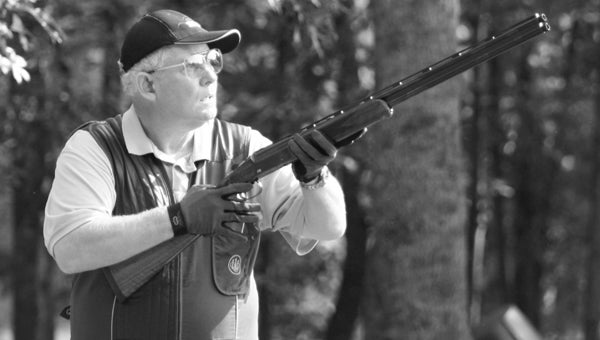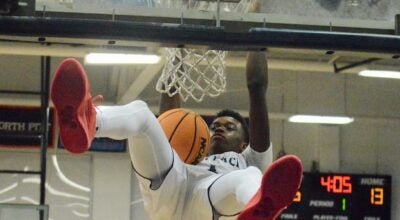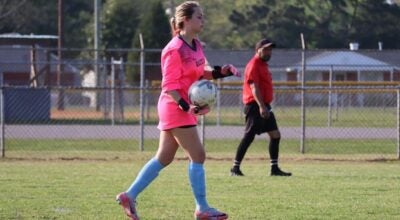Sporting clays good training for dove hunters
Published 10:52 am Monday, August 25, 2014

ELRITA DOWNS | CONTRIBUTED
GOOD SHOOTING: Clark Hutchinson stands ready to shoot at what many sportsmen call a “clay pigeon.” He’s been shooting clay targets for many years and now instructs at Hunter’s Point in Washington. Dove hunters who may feel a little insecure with their shooting skills as the opening day of this year’s season would do well to take advantage of Clark’s shotgun classes at Hunter’s Point.
Sporting goods dealers are experiencing quite a demand for shotgun shells designated as “birdshot” and there’s a reason for it. North Carolina’s first dove hunting season of the year is rapidly approaching and, for many Tar Heels, it’s like a religious holiday.
Thank goodness the opening day falls on Monday September 1st (Labor Day), which is a holiday for schools. If Dove season opened on a regular school day, the schools in Beaufort County would wonder why so many students were absent.
In the few days left before the opening day hunters will be taking shotguns out of storage, dusting them off and making sure that they are in good operating condition. When that pre-season chore is finished, many of the hunters will go outside and “pop off a few caps” at a target and be satisfied if the shotgun was shooting where it is supposed to. That’s not realty a true test of getting the gun ready for some serious wingsshooting though.
It would be a little bit better if they found a friend to throw some clay targets with a hand operated target thrower or one of those basic traps that’s bolted to a spare tire. That’s one way to test one’s skill at shooting at a rapidly moving target, but it’s still not the absolute best way to get your wingshooting skills up to the level that dove hunters need to be at.
If I were to pick the very best way of sharpening up your wingshooting skills at a difficult moving target (such as a dove), I’d have to recommend going to a local sporting clays range and practicing by shooting at high-flying clay targets that are launched to mimic a live bird’s flight pattern. It’s a challenging shooting game that some describe as “golf with a shotgun.”
Luckily, Beaufort County has one of the very best (if not the best) sporting clay ranges in North Carolina located several miles north of Washington on Highway 17. Their sporting clays course is set up to throw clay targets that simulate live targets that a hunter might actually experience out in the field.
Hunters’ Point sporting clays has 14 different shooting stations where a variety of clay targets are thrown (launched) for shooters to try and hit. The shooters stand in a pre-determined spot with their guns loaded and ready to shoot. At the command of “pull,” an automatic clay target launcher throws a clay target into the air that flies similar to what a real bird would fly. If the shooter makes a good shot that hits the target, the “clay pigeon” shatters into a hundred pieces. “Dead bird!”
Instead of going through the entire 14 stations at Hunters’ Point, the shooter has the option of shooting at individual stations which, throw targets that the hunter has previously had trouble hitting. Hunters that have had trouble hitting a fast flying dove might choose a station that throws targets that fly similar to the way the hard-to-hit dove flew. If the hunter desires, he can stay at this particular station and practice until he gains proficiency at hitting the target that was giving him trouble.
If the hunter still has trouble hitting a certain target, he can call on one of the experienced instructors at Hunters’ Point, such as Clark Hutchinson. Good instructors don’t work for free but they’re invaluable when the hunter can’t solve his problem shot by himself.
For the privilege of shooting 25 shots on the 14-station course, shooters at Hunters’ Point pay a target fee of $12.00. If only a chosen few shots are used the fee is 48 cents per shot.
Another option for sharpening up ones shooting skills is to try one’s luck in Five Stand. This is a competition game that usually involves five individual shooters who take turns at hitting targets. The targets all simulate flying birds and present a challenge to hit. This is good practice for prospective dove hunters, but it doesn’t quite answer challenges that most dove hunters face in the field. The sporting clays game is a better learning experience for hunters.





